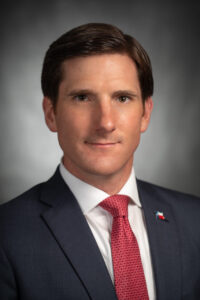By MAE ANDERSON
AP Business Writer
NEW YORK With summer having gotten off to a scorching start, workers across the country may be dreaming of a seaside escape or cutting out early to watch a movie in an air-conditioned theater.
For some, that can be a reality. Business owners have found that offering summer hours – a reduced schedule on Fridays, usually between Memorial Day and Labor Day — can be a way to boost employee morale. Workers are able to deal with summer childcare gaps, return to the office refreshed and feel like their job values them, owners say.
Reduced hours in the summer months can also enable smaller businesses to stand out to prospective employees in a competitive talent marketplace.
“When smaller employers have less resources and they want to be more competitive with attracting and retaining quality talent, they want to be creative with the benefits that they offer. And one of the benefits they can offer would be flexible time in the summer,” said Rue Dooley, a knowledge advisor at the Society for Human Resources Management.
Special summer schedules don’t work for all types of industries, however. And it takes some trial-and-error to figure out the best option for each company.
Michael Wieder, co-founder of Lalo, which makes baby and toddler products, thought summer hours were a good fit for his 32 employees because so many of them – about 75% — are parents.
His staffers work remotely and are spread across the U.S. and several other countries. Since founding the company in 2019, he tried various summer hour schemes, such as offering every other Friday off, but the current system works the best, he said. On Fridays, the business closes at 1 p.m. local time. Staffers also get four-day weekends for Memorial Day, Labor Day and July 4th.
“We know that childcare is harder during the summer,” he said. “Summer is a time where people do like to take time with their family or take trips, and we want to be able to reward our employees with some additional time with their families.”
Greg Hakim, owner of Corporate Ink in Boston, which offers PR services to emerging tech companies, said he uses summer hours as both a recruitment and retention tool. He plays up summer hours in job descriptions and said the perk has helped him retain staff – particularly during the pandemic when others found it hard to keep workers.
“It’s just helped us retain our team during the ‘Great Resignation,’ people are just like losing people left and right,” he said. ”And I think we went 23 months without having someone resign. And that’s just such an important benefit and competitive advantage.”
Jim Christy co-owns Midwest Cards, a trading card retailer based in Columbus, Ohio, with about 30 employees. He started offering summer hours – Fridays off after 2 p.m. — in 2021, a year after founding the company, as the pandemic upended normal ways of working.
The hardest part was figuring out what to offer people who worked in his brick-and-mortar shop, who also fill online orders, since they had to work normal hours to keep the store running. He decided to give logistics-side workers Friday afternoons off while the six staff who work on the brick-and-mortar side and do customer service for online orders get off on Mondays, when the store was closed. Some workers can sign on remotely to answer customer queries if they want to, but it is not required.
“We couldn’t just apply one situation to everybody. So that that was a little challenging,” he said.

For some companies, summer hours work so well they’ve gone even further. Chris Langer, co-founder of digital marketing agency CMYK, has 14 staffers who all usually work in the company’s studio.
In 2014, rather than offer Friday afternoons off, he started offering entire Fridays off during the summer –- every other week. Then, last year, Langer started hearing chatter about the four-day work week, so he decided to try that out during the summer.
Communicating with the company’s tight knit staff, who have all worked together for years, makes the four-day week doable, Langer said.
“We’re small, so, it’s easy to have a discussion with everybody on like what’s real and how everyone’s feeling, if they’re feeling stressed out, can they get their work done,” he said.
If a big project is due, he might call people in on a Friday, but so far, that has only happened twice since CMYK instituted the four-day week.
“It is more stressful in terms of getting the work done throughout the week, but the day (off) was much more of a payoff,” he said.
Of course, summer hours don’t work for every company. Retail stores risk losing customers to big box stores or others that are open for more hours. And employees that are paid by the hour rather than set salaries can balk at getting paid for fewer hours.
Jennifer Johnson, owner of True Fashionistas, a consignment shop in Naples, Florida, thought she would try summer hours in 2022 because Naples is seasonal, with the busiest part of the year wrapping up around Easter. Beginning May 1, she changed her open hours from 10 a.m. to 6 p.m. to 11 a.m. to 5 p.m. But the change didn’t work.
“We have a staff of 45 to 50 employees, and it cut their hours and that upset them, and rightfully so,” she said. “It also upset our customers who were used to our hours and wanted to shop.”
She abandoned the effort after two months and hasn’t tried again.
“I really believe that with anything consistency is the key,” she said. “The customers need to know they can rely on you to be open, you cannot always be changing your hours because that is a quick way to lose customers.”





















